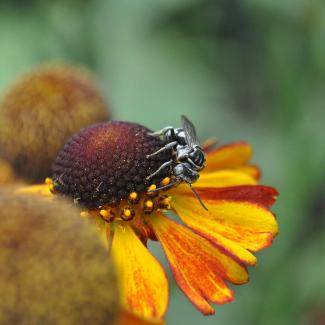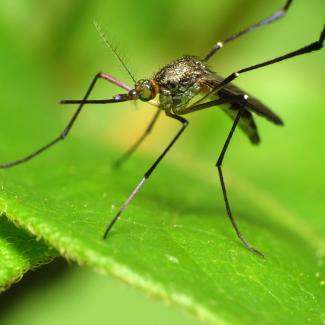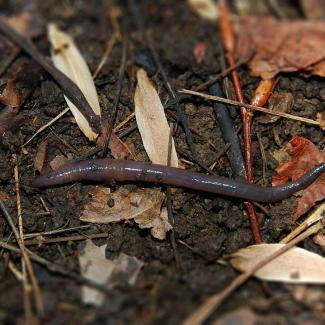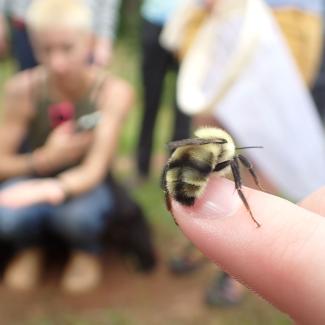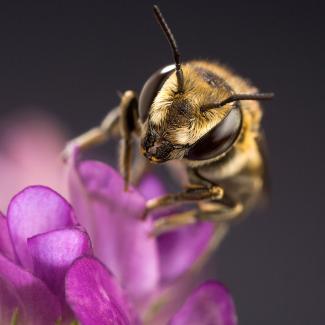Pollinator Check-Up: Bee Health and Novel Monitoring Tools
42 MinutesGuests: Dr. Laura Figueroa
In the face of insect decline, it is critical for us to understand pollinator health both in terms of influencing factors and how to monitor those impacts. Today we are specifically focusing on bees.
How Habitat Kits Are Helping Save Pollinators
35 MinutesGuests: Giovanni Di Franco
Creating habitats with native plants is one of the most impactful ways to help invertebrates. One of the programs at Xerces is helping people do just that by providing free habitat kits to communities in several regions of the US.
Stories from the Prairie: Life in a Resilient Ecosystem
47 MinutesGuests: Chris Helzer
Prairies are an ecosystem that historically spanned the center of this continent from the Rocky Mountains to east of the Mississippi and from Texas north to Saskatchewan. Although less than 5% of that prairie remains today, it is critical habitat for a number of invertebrates. Prairies are incredibly diverse and hold many exciting stories.
Greenroofs, Solar Arrays, and Urban Farms: Insect Conservation in Human-Dominated Ecosystems
47 MinutesGuests: Dr. Chelse Prather
Most of the natural world has been altered by humans in some way. Ecosystems that are dominated by humans or man-made structures, such as cities, can still provide meaningful and essential habitat for insects. Today, we are going to discuss research being done in various human-dominated landscapes to answer the question: how do we restore and conserve insects in these ecosystems?
For the Love of Flies: The Unsung Heroes of the Insect World
46 MinutesGuests: Dr. Erica McAlister
Flies are amazing insects that play critical roles in our environment, including pollination, waste disposal, pest control, and as a link in the food web. Flies are greatly diverse in colors, shape, size, and where they live. Butterflies and bees probably generate more enthusiasm, but it’s time to change that.
Plastic Bands, Pesticides, and Deadly Drift: A Study on Mosquito Spray
40 MinutesGuests: Aaron Anderson
Who doesn’t know the high-pitched whine of a nearby mosquito? We know they can be a nuisance, and in many regions, a health risk because of their ability to spread diseases. Some communities do public control campaigns, and increasingly, companies are offering home spraying of yards. But, the insecticides used in these sprays are broadly toxic to insects, and the risk they pose to pollinators isn't fully understood. In the summer of 2023, Xerces did a study looking at how these insecticides spread across the landscape.
The Underground Heroes: Earthworms
49 MinutesGuests: Jennifer Hopwood, Stephanie Frischie
Earthworms. They may elicit memories of digging through the dirt, probably as a child, and picking them up to discover what they are. But what do they do other than slink around and bury themselves in the soil?
Social and Emotional Learning: Making Science Accessible
40 MinutesGuests: Gwen Pearson
More than ever, communicating scientific information effectively is critical to conservation efforts. But how exactly do we do that?
Protecting Bees from Pesticides: Why EPA Regulations Need to Change
43 MinutesGuests: Aimée Code, Sharmeen Morrison
The United States Environmental Protection Agency, also known as the EPA, is tasked with regulating pesticides to protect people and the environment from their impacts. To test these impacts, the EPA uses honey bees. This might seem reasonable, but the honey bee is not native to North America and its social colony structure is unique and not representative of the thousands of native species of bees in the United States. The reliance on the honey bee for testing has profound implications for the safety of our native bees and other pollinators, given their vastly different life histories.
Monarch Conservation: Tracking Migration with Rice-Sized Technology
41 MinutesGuests: Ashley Fisher
The monarch butterfly is popular and currently in the news a lot. You might think that we know all there is to know about it, but there are many mysteries remaining, particularly about their migration and how they use their habitat. This may be more so for the western population that overwinters in California. Radio tracking has long been used for studying the movement and habitat use of bigger animals. Advances in this technology mean it is emerging as a tool that can provide scientists with some answers about tiny animals too.

